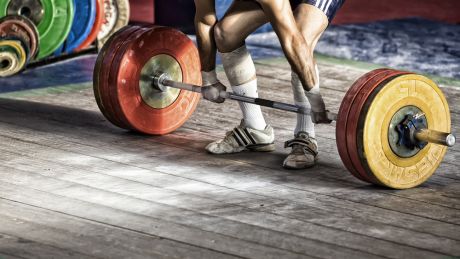Why Lifting Heavier Weights Isn’t Always Better
Going too big too soon is more likely to derail your fitness regime rather than progress it

Everyone likes to see progress from their training. If you’re trying to lose weight then you want to see lower numbers on the scales, while runners and cyclists will shoot for faster times or longer distances. For gym rats, progress means lifting heavier weights, because adding an extra couple of kilos to your squat or deadlift is a definitive sign you’re getting stronger.
However, going all-out for that extra weight could well be counter-productive in the long-term, as Joel Freeman, Beachbody super trainer, explains.
What are the problems that can arise if you try to lift too heavy?
The simple answer is injuries! In the fitness world more advice is available than ever before thanks to social media, with a slew of opinions on what to lift, how to lift and all sorts of different ways to lift. The problem is, most people do not have a stable enough foundation or the necessary amount of information or coaching to do many of the exercises that they see.
Trying to lift more than your body is ready for can easily result in an injury like a herniated disc or torn ligaments that could affect not just your training but the rest of your life.
How can you tell if you are using too heavy a weight?
Control and proper form. You should always be able to control whatever weight you are trying to lift without compromising correct form and lifting position. This doesn’t mean that you’re not challenging your muscles and that’s what having a spotter can help do. But if you’re not able to fully engage the primary muscles that you’re trying to work, then you should be backing off the weight. So for example, you should be doing the chest press without shrugging your shoulders for assistance, or on a deadlift you shouldn’t be curving your back.
See related
- Home Workout For Shoulder Strength: Small Dumbbells, Big Shoulders
- The Bodyweight Workout That Builds Big Muscles
- A Straightforward Gym Workout Routine For Beginners
Are there any exercises in particular where it’s especially important to avoid going for too heavy a weight?
The exercises to be very careful with are any that will put compression or pressure on your back. Ironically, these are the exercises that most people want to lift heavy. Back squats and barbell deadlifts are two of the main exercises that I always suggest going lighter with – you should be working on control, rather than max weight. There are plenty of alternative exercises to build the same muscles and your back will thank you in the long run.
Do you have any advice on how gym beginners should scale up the weight they lift over time?
Patience and consistency are key in weightlifting. Your muscles will grow if you challenge them, as long as you give them time to recover between sessions and fuel them appropriately. Focus more on the consistency of challenging the particular muscle you’re working – so three sets of ten reps for five or six exercises that work that muscle – rather than trying to do as much weight as possible. If you can lift the same weight for two or three weeks, then try increasing the weight in small increments without losing form and control. Doing this will also help prevent injuries and reversing your progress.
Get the Coach Newsletter
Sign up for workout ideas, training advice, reviews of the latest gear and more.

Nick Harris-Fry is a journalist who has been covering health and fitness since 2015. Nick is an avid runner, covering 70-110km a week, which gives him ample opportunity to test a wide range of running shoes and running gear. He is also the chief tester for fitness trackers and running watches, treadmills and exercise bikes, and workout headphones.









